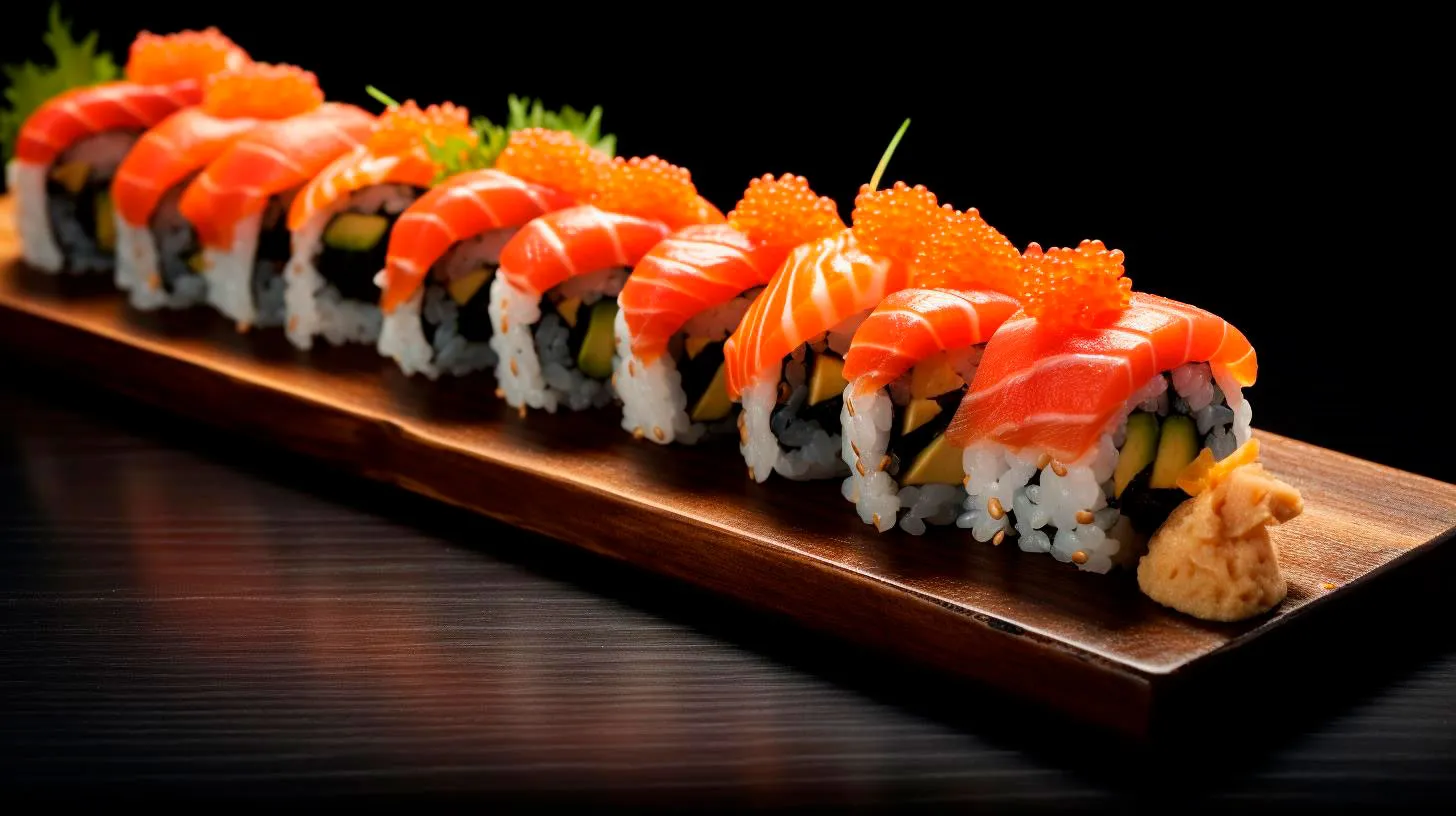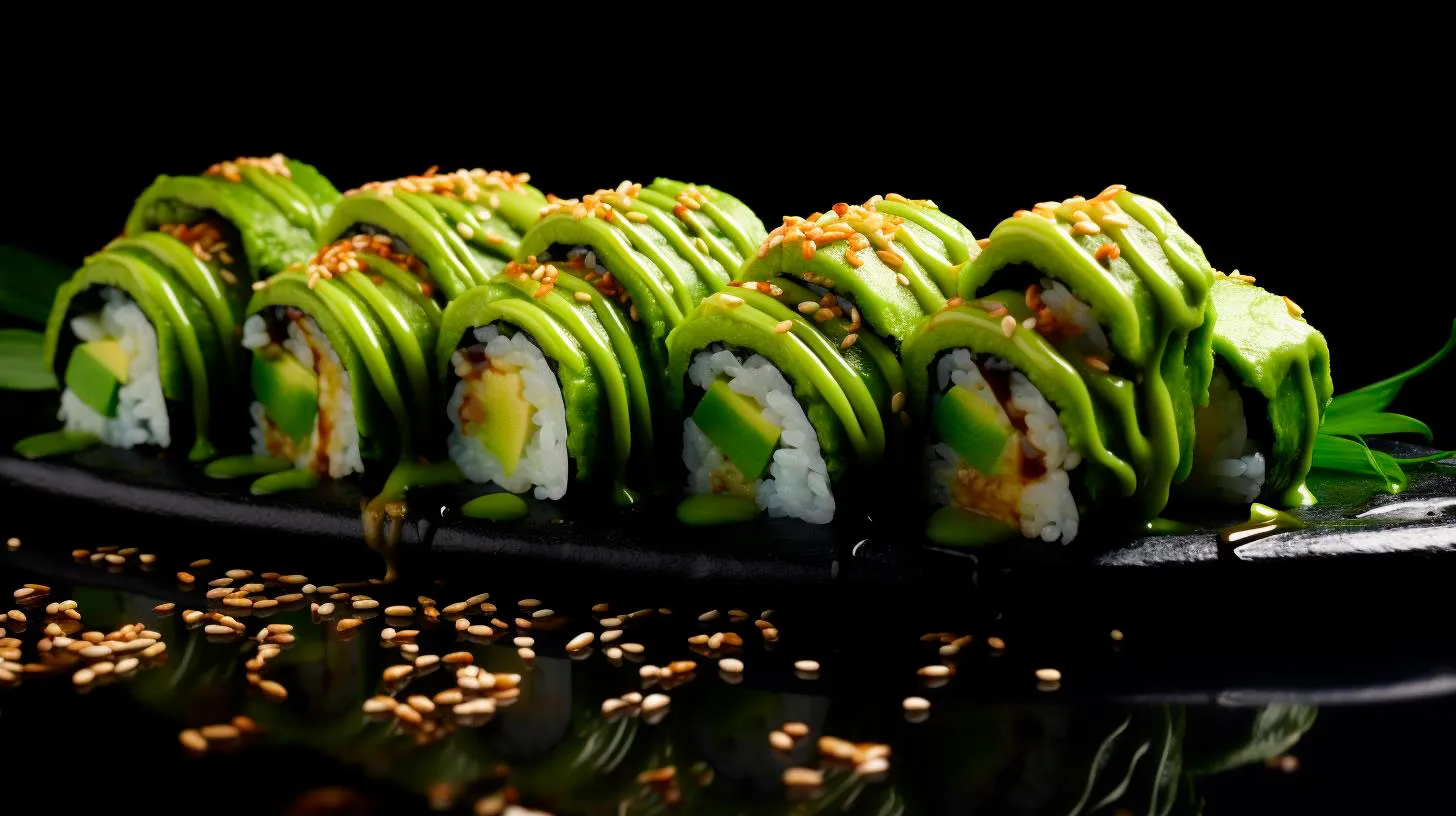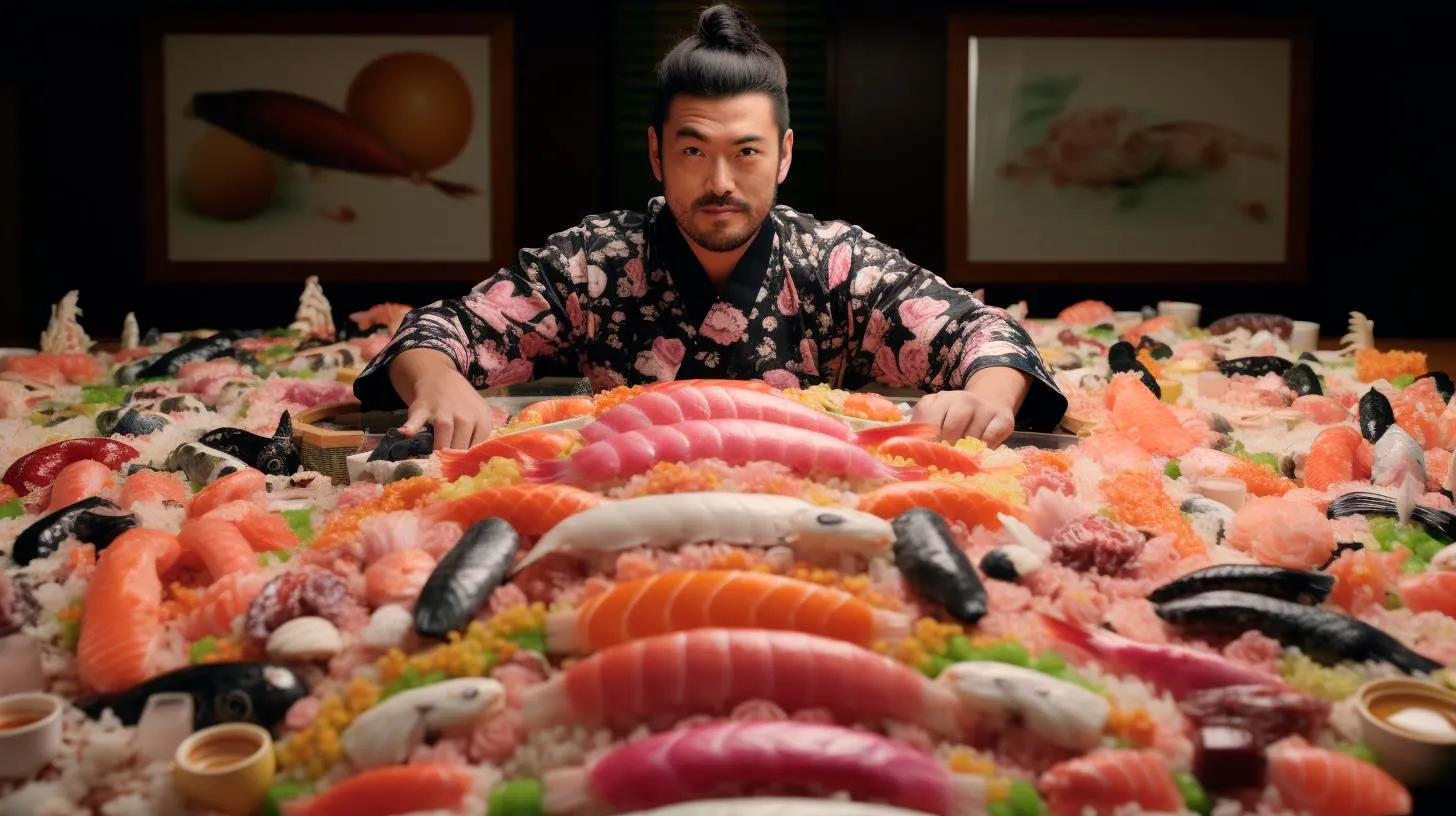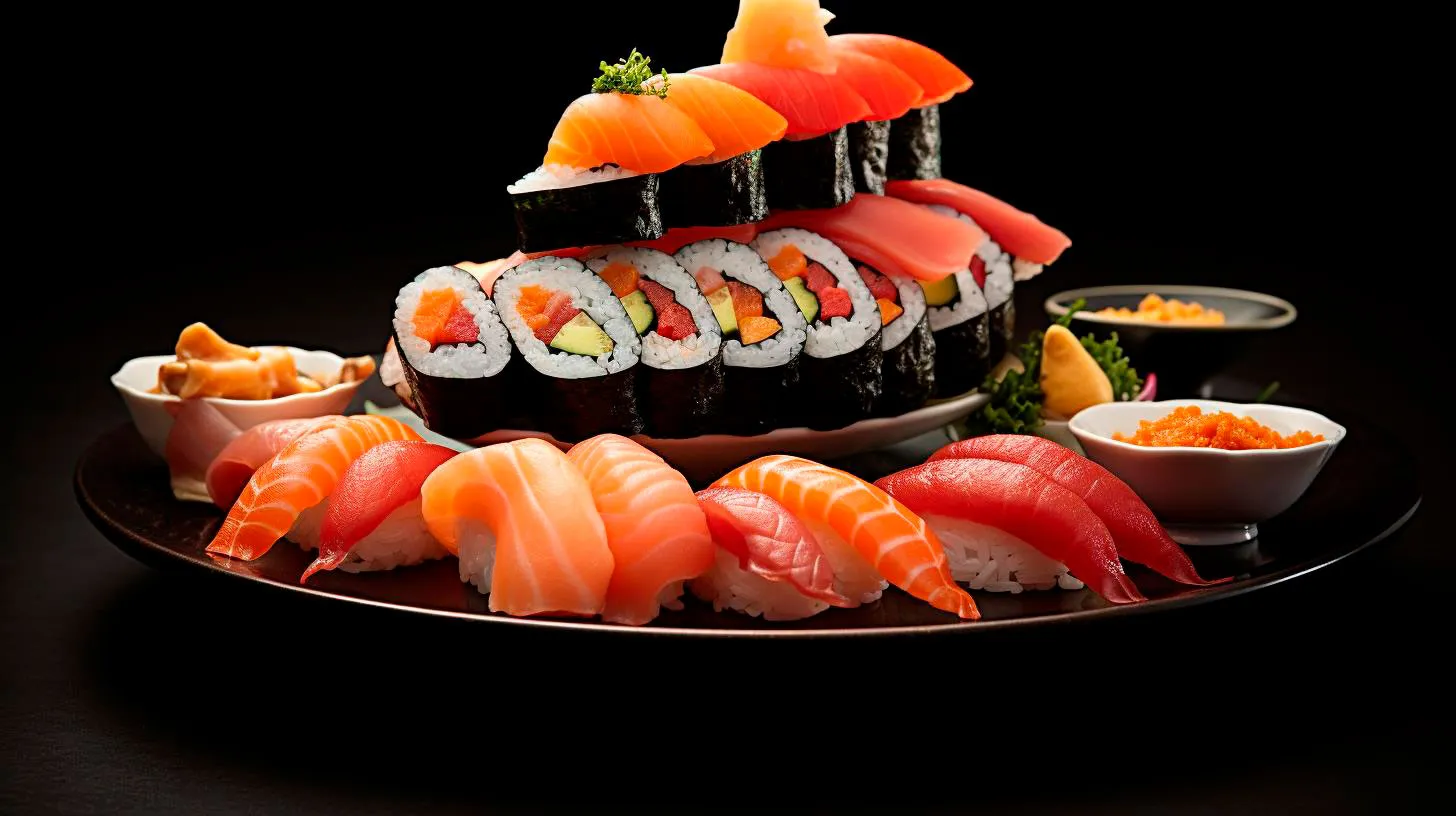The Versatility of Tobiko and Masago in Sushi: Unveiling the Delicate Flavor Profiles
These tiny, vibrant fish roe varieties not only add a delightful burst of color but also contribute a subtle yet distinctive taste to sushi. Let us explore the versatility of tobiko and masago, their unique flavor profiles, and how they elevate the sushi experience.
Tobiko: The Elegant and Flavorful Roe
Tobiko, the roe of flying fish, is an exquisite ingredient that is widely used in Japanese cuisine. It is renowned for its bright orange color and small size, which adds a visually appealing touch to any sushi creation. Often mistaken for caviar due to its appearance, tobiko has its own unique flavor profile that sets it apart from other fish roes.
The key features of tobiko are:
- Mineral-rich taste that is both savory and slightly sweet
- Delicate and crunchy texture that adds a pleasant pop in every bite
- Low fat content and high protein content, making it a healthy choice
Tobiko is a versatile ingredient that enhances the taste of sushi in various ways. It can be marinated, infused with flavors such as wasabi or yuzu, or even dyed with natural ingredients to create visually stunning sushi creations. With its unique flavor and texture, incorporating tobiko into your sushi rolls can provide an exciting contrast to other ingredients.
Masago: The Subtle and Textural Accent
Similar to tobiko, masago also comes from fish roe and is another popular choice for enhancing sushi dishes. Masago, often referred to as the roe of capelin fish, exhibits its own distinct characteristics when it comes to flavor and texture.
The key features of masago are:
- Mild and subtly sweet taste that doesn’t overpower other flavors
- Small, crunchy texture that adds a pleasing pop and contrast in sushi rolls
- Rich in omega-3 fatty acids, providing health benefits
Like tobiko, masago can be used in a variety of sushi creations. Its subtle flavor complements other ingredients without overpowering the overall taste, making it a versatile choice for sushi lovers. The texture of masago adds an enjoyable crunch, bringing an added layer of excitement to each bite.
Elevating Sushi with Tobiko and Masago
Now that we understand the unique qualities of tobiko and masago, let’s explore how these versatile fish roes elevate the overall sushi experience.
Flavor Enhancement:
- The savory and slightly sweet taste of tobiko enhances the flavors of sushi, creating a well-balanced mouthful.
- Masago’s subtle sweetness complements other ingredients without overpowering them, resulting in a harmonious flavor profile.
Textural Delight:
- The delicate crunch of tobiko and masago adds an enjoyable texture to sushi rolls, creating a delightful mouthfeel.
- The popping sensation of tobiko and masago provides an exciting contrast to the softness of rice and other fillings.
Visual Appeal:
- The vibrant orange color of tobiko adds a visually stunning touch to sushi rolls, making them more enticing.
- Masago’s tiny, glossy beads create an eye-catching appearance that appeals to both the eyes and the taste buds.
Health Benefits:
- Both tobiko and masago are low in fat and rich in protein, making them a healthier option for sushi enthusiasts.
- Masago provides omega-3 fatty acids, offering a range of health benefits, including improved heart health.
By incorporating tobiko and masago into your sushi creations, you can elevate the overall dining experience, delighting your taste buds and enticing your visual senses. Whether you prefer the savory crunch of tobiko or the subtle pop of masago, these fish roes truly contribute to the artistry and flavors of sushi.
So, the next time you indulge in sushi, make sure to appreciate the versatility and delicate flavor profiles of tobiko and masago. With their unique qualities, they undoubtedly enhance the experience of enjoying this beloved Japanese delicacy.
Tobiko and Masago: How These Tiny Eggs Elevate the Sushi Experience
Known as tobiko and masago, these tiny eggs not only add a burst of flavor but also elevate the overall sushi experience. In this article, we’ll explore the differences between tobiko and masago, their unique characteristics, and how they contribute to the art of sushi-making.
Tobiko: Bursting with Flavor
Tobiko is a type of fish roe commonly found in Japanese cuisine. These small, shiny eggs come from the flying fish and are known for their vibrant colors, which range from bright orange to green, red, and even black. These eye-catching colors not only make sushi visually appealing but also indicate different flavors and variations.
Key Takeaways:
- Tobiko is fish roe that is commonly used in Japanese cuisine.
- It is available in various colors, adding a visual appeal to sushi rolls.
- The different colors of tobiko signify different flavors and variations.
Aside from their visual appeal, tobiko adds a unique and delightful pop of flavor to sushi rolls. Its delicate texture and slight crunch create a pleasant contrast to the softness of the rice and the tenderness of the fish. Additionally, its natural saltiness enhances the overall taste of the sushi, making every bite a burst of umami.
Notably, tobiko is also a rich source of omega-3 fatty acids and high-quality protein, making it a nutritious addition to your sushi. These health benefits, combined with its vibrant appearance and delightful flavor, make tobiko highly coveted among sushi enthusiasts.
Masago: Delicate and Subtle
Similar to tobiko, masago is a type of fish roe used in sushi. It is sourced from the capelin, a small fish found in the icy waters of the North Atlantic and Arctic oceans. Masago eggs are considerably smaller than tobiko eggs, and their colors range from pale orange to a golden hue. While not as visually striking as tobiko, masago offers its own unique characteristics that sushi aficionados appreciate.
Key Takeaways:
- Masago is fish roe sourced from capelin, a small fish found in the North Atlantic and Arctic oceans.
- It has a small size and ranges in color from pale orange to golden.
- Masago provides a delicate and subtle flavor to sushi rolls.
Masago has a delicate texture that almost melts in your mouth. It provides a subtle, slightly sweet flavor that complements the natural taste of the fish and rice. Where tobiko adds a pop of flavor, masago offers a more nuanced taste that is appreciated for its ability to enhance the overall sushi experience without overpowering other flavors.
While less rich in omega-3 fatty acids compared to tobiko, masago is still a good source of protein, vitamins, and minerals. Its small size and delicate flavor make it an ideal ingredient for adding a touch of elegance to sushi rolls.
Conclusion
Tobiko and masago are more than just tiny eggs; they are essential elements in the art of sushi-making. These little bursts of flavor and color not only enhance the visual appeal but also elevate the overall taste of sushi rolls. Whether you prefer the vibrant and bold flavors of tobiko or the delicate and subtle notes of masago, their inclusion adds another layer of complexity to each bite. So the next time you indulge in a sushi feast, take a moment to appreciate these tiny eggs that play a big role in the sushi experience.
Exploring the Nutritional Benefits of Tobiko and Masago in Sushi
In this article, we will delve into the nutritional properties of tobiko and masago and why incorporating them into your sushi can be a healthy choice.
Tobiko: The Tiny Orange Jewels
Tobiko, which refers to the roe of flying fish, is characterized by its small, vibrant orange eggs that pop in your mouth. Apart from enhancing the visual appeal of sushi, tobiko packs a nutritional punch:
- Rich in Omega-3 Fatty Acids: Omega-3 fatty acids are essential fats that support heart health, brain function, and reduce inflammation. Tobiko is an excellent source of these healthy fats, contributing to your daily intake.
- High in Protein: With approximately 4 grams of protein per tablespoon, tobiko provides a protein boost that can aid in tissue repair, muscle growth, and overall satiety.
- Packed with Antioxidants: Tobiko contains antioxidants like vitamin E, which help protect your cells from damage caused by free radicals and promote a healthy immune system.
In addition to its nutritional benefits, tobiko introduces a burst of flavor and a satisfying crunch to sushi rolls. Its unique texture and popping sensation make it an enjoyable addition to any sushi creation.
Masago: The Delicate Orange Eggs
Masago, similar in appearance to tobiko, comes from the roe of capelin fish. Although they may look alike, masago offers its own distinct nutritional advantages:
- Good Source of Vitamins: Masago contains essential vitamins such as vitamin B12, which plays a crucial role in red blood cell formation and maintaining proper brain function.
- Iron-Rich: Iron is essential for oxygen transport throughout the body and preventing iron-deficiency anemia. Masago is a great source of readily absorbable iron.
- Low in Calories: If you’re watching your calorie intake, masago is a suitable choice. With only around 40 calories per tablespoon, it can add taste and nutrition to your sushi without adding excessive calories.
As with tobiko, masago brings a unique texture and delicate flavor to sushi. Its small size and vibrant color make it a visually appealing garnish that adds a pop of excitement to your sushi rolls.
Key Takeaways
When enjoying sushi, it’s not just about the taste; it’s also about the nutritional benefits. Incorporating tobiko and masago into your sushi rolls can provide various advantages, including:
- A boost of omega-3 fatty acids and protein from tobiko.
- A dose of antioxidants and vitamins from tobiko and masago.
- Adding a satisfying crunch to sushi with tobiko.
- Enhancing the visual appeal with vibrant colors from both tobiko and masago.
- A low-calorie option with masago.
So, the next time you indulge in sushi, consider trying tobiko and masago. Not only will you experience an explosion of flavors and textures, but you’ll also be treating yourself to a nutritious delight!



